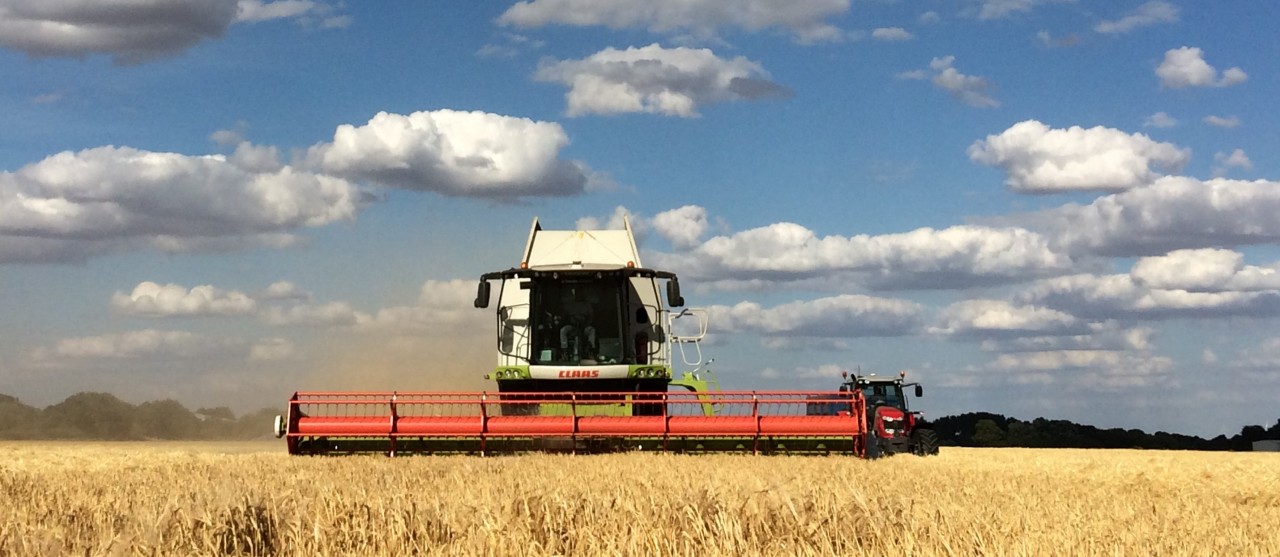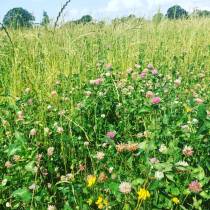Getting the best from your fallow
With more growers now getting involved with Countryside Stewardship, a key option that many are selecting is the AB15 two-year legume fallow. This option is proving to be particularly popular as growers weigh up the pros and cons of various break crops, including oilseed rape.
With a potential payment of £522/ha a year, the AB15 option can be a useful risk management tool that enables problematic fields to be rested as part of the rotation. This in turn can help to address other issues such as, for example, black-grass control or damage from local deer populations where the viability of conventional cash crops is put at risk.
As combines continue to roll across the countryside, many growers now have land available for this option so if you're considering it, it's worth taking into account some key considerations.
Picking the right mix
There have been a few changes to option requirements since the launch of Countryside Stewardship a few years ago, so it is important to be aware of the fine detail before choosing your mix.
Guidance for growing the AB15 two-year legume fallow is available from the Countryside Stewardship section of the Government's website. Here, you'll also find advice and information about what can be done across the various start dates of Countryside Stewardship agreements. It is important to be aware of these dates as there have been a number of changes in recent years. I've included a summary of the guidance information below:
If a farmer is in an agreement starting on or after 1st January 2021, they are guided towards using a grass-free mix. The prescription for such agreements says the following: "In the autumn, sow a mixture (based on the suggestions below) and retain for two years before re-establishment.
Sow the seed mix at 15-20 kg/ha with the lower seed rate appropriate on light/medium soils and the higher seed rate appropriate on heavier soils.
You can also include grasses such as cocksfoot, perennial ryegrass or Timothy in the seed mix to help smother black-grass and other competitive grass weeds."
In such a situation, you could use the Kings Grass Free Legume Mix and if you are particularly concerned about grass weed pressure, you could opt for our Legume Mix with Timothy which includes an additional 2kg of Timothy grass.
Where an agreement started on or before 1st January 2020, the prescription says, "In the autumn, sow a mixture (based on the suggestions below) at an overall seed rate of around 30 kilograms (kg) per ha, and retain for two years before re-establishment. If soils are dry at sowing, substitute some of the ryegrass with cocksfoot (up to 30%) or Timothy to help to establish ground cover more quickly."
Our advice for this circumstance is that you can use either our Basic Two-Year Ryegrass Legume Mix or our Two-Year Ryegrass Legume Mix.
If you choose not to use these options, you should contact the Rural Payments Agency (RPA) with a document known as a Minor Temporary Adjustment (MTA) form. This can be found on the Government website in the section for Countryside Stewardship forms.
Those who are in the third year of an agreement can submit an MTA form for the establishment in that year, highlighting why the mix prescribed for later agreements is a more appropriate mix for the site before then requesting the use of the same mix for re-establishment. If doing this, the application would need to be approved before that mix is re-established.
Getting off to a good start
Regardless of the mix selected, it is vitally important that it is sown in good time and at the right seed rate to match the conditions – as is the case when establishing oilseed rape, every day counts! You should aim have the AB15 option in by the first week of September where possible. The risks associated with late sowing, increased wet weather and the potential for greater black-grass pressure will most likely result in problems later on.
Sowing depth is important too, as is ensuring that seed is sown on or very much just below the surface. A common establishment challenge is where seed is sown too deep, which hinders vigour and will see the smaller seeded species struggle to successfully emerge.
Onward management
Cutting hard in year one is essential; the aim is to keep the sward at four to six inches in height through the year from April onwards. The frequency will depend on weather conditions, so cutting may be required a couple or even several times. Persistence is a sound investment so sufficient, regular mowing should be costed into the option gross margin. Good management in year one should limit the amount of management required in year two - there is scope to cut in year two if black-grass is present but we would hope to avoid that issue.
A crop sown in August 2021 should be destroyed in August of 2023. This provides the only opportunity for the crop to be cut or grazed for forage use and it can be valuable for ensuring good preparation of the land for the following crop. If this is to be done, we advise getting the new crop in the ground beforehand to show that, regardless of whether an RPA inspection takes place or not, it is vital that all elements and guidance have been adhered to.
Some growers are choosing to retain the option on the same parcel or block of land for the five years of the agreement, in which case replanting should take place immediately afterwards. In a no-till situation, this would require glyphosate and direct drilling so is fairly straightforward.
Take good advice
With the deployment of this option across considerable areas of land, it's essential to take the right advice.
The correct mixture needs to be selected as it's incredibly important for compliance and getting the most from the option in question. By treating the option as any other crop with the right agronomy and management, it will be a great asset to the wider rotation, surrounding farm wildlife and the business' bottom line.
To get planning off to the best start when embarking on the AB15 option within an agreement, it's a sensible idea to benchmark any activity so you can evidence your work and progress. This can be achieved through tailored soil analyses such as those available from Frontier Agriculture's Soil Life service, where a combination of data from your fields, farm scale research and insight from soil health experts can help you monitor and improve soil structure and health.
The Kings team are working with growers across a wide range of soil types and the attributed challenges that come with these. Take time to talk to us and get it right first time. Please speak to your local advisor or contact us if you require more information.
As a subscriber, you’ll receive email alerts each time a new blog is published so you can always stay updated with the latest advice and insights from our experts






Comments